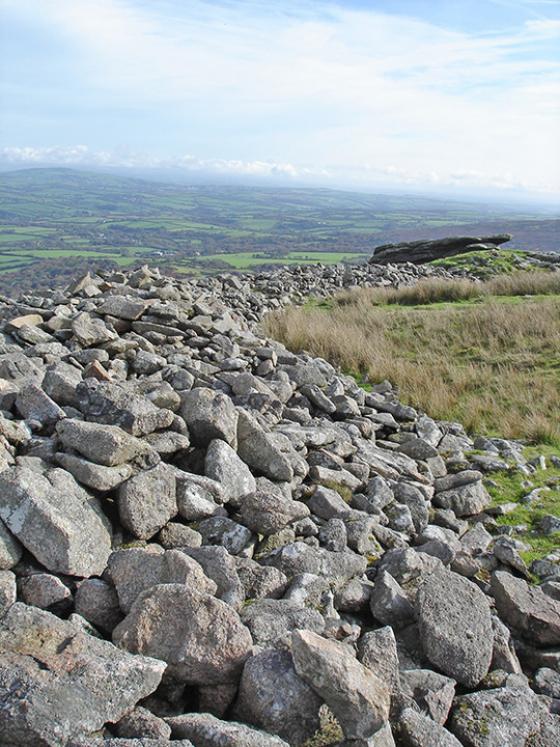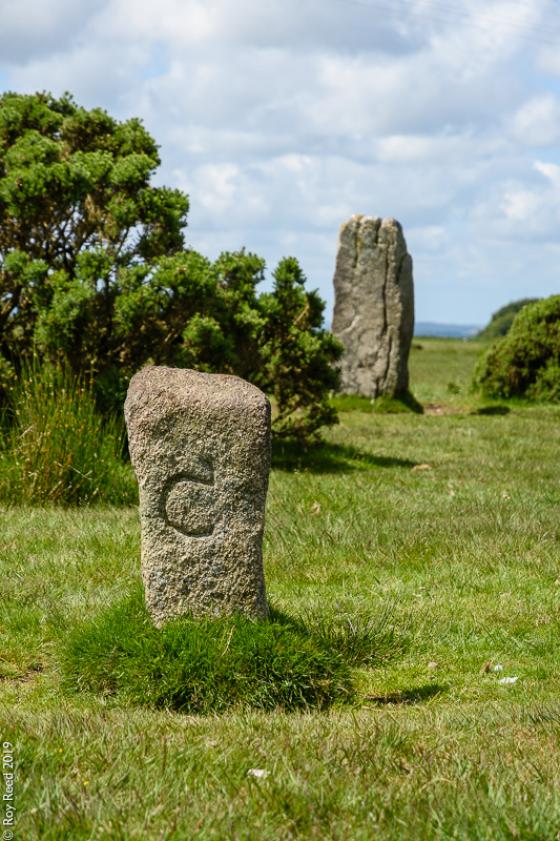



The view eastwards out of Cornwall, across the Tamar valley towards the high uplands of Dartmoor.

The rock basin on the very summit of Kilmar Tor.

Perfect natural chamber amongst the outcrops of the tor.

High Rock, Kilmar Tor, looking down on Twelve Men’s Moor.

High Rock, Kilmar Tor.

From: The Cheesewring, Kilmarth Rocks and Trevethy Stone, Cornwall. Penny magazine of the Society for the Diffusion of Useful Knowledge, Jan 23, 1836, 28-29.
The Kilmarth Rocks are a lofty range of half a mile in length, running east and west, about two miles northward from the Cheesewring, and in the parish of Linkinhorne, Cornwall. The westernmost pile, represented in the sketch, stands on the summit of this elevated ridge, and is in itself about twenty-eight feet high. It overhands at least twelve or fifteen feet towards the north, and when viewed from the east appears so slightly based, that a man or a strong gale might suffice to shove the whole mass over the tremendous precipice; but when surveyed from the western side its foundation appears more solid, and it will require perhaps many ages to subvert the wonderful pile.
The immense size of many of the granite rocks of which this ridge is formed, and the rude and heterogeneous manner in which they lie one upon another, together with the wildness and extent of the surrounding panorama, overpower the mind with awe and astonishment at the grandeur of the operations of Nature. Towards the north is seen the top of Launceston Castle, also, in clear weather, the Bristol Channel and Lundy Island; to the south-east Plymouth, its Sound, and Mount Edgcumbe; and towards the south-west the Deadman Point and the English Channel, with the bleak midland hills of Devonshire and Cornwall.
A large rock-basin, of about three feet diameter and one foot deep, is on the summit of one of the eastern rocks of Kilmarth.
I would go for the rock basin alone, I love a rock basin.
From
The Cheesewring, Kilmarth Rocks and Trevethy Stone, Cornwall. Penny magazine of the Society for the Diffusion of Useful Knowledge, Jan 23, 1836, 28-29.









































































































































































